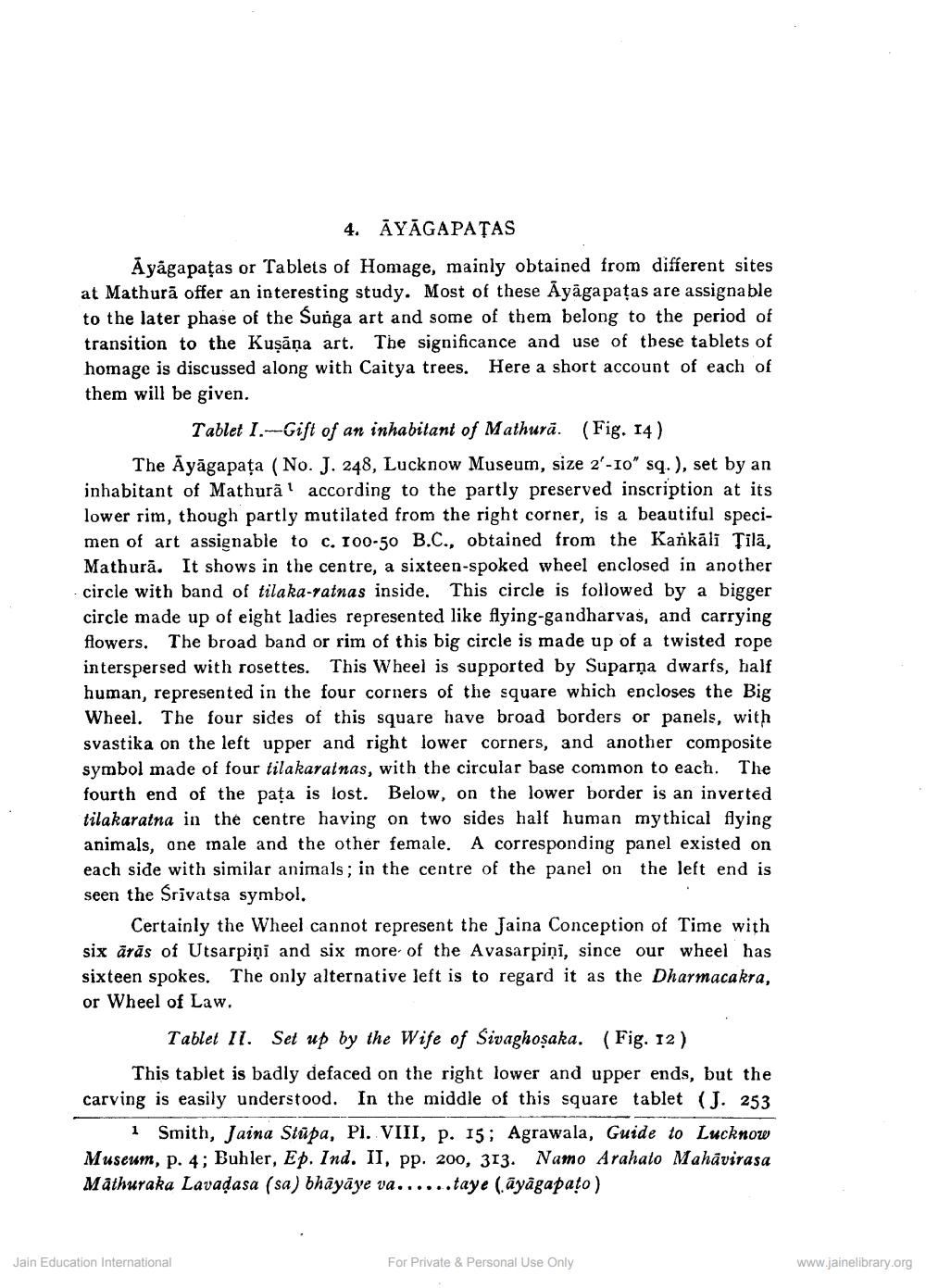________________
4. ĀYAGAPATAS Ayagapatas or Tablets of Homage, mainly obtained from different sites at Mathurā offer an interesting study. Most of these Āyāga pațas are assignable to the later phase of the Sunga art and some of them belong to the period of transition to the Kuşāņa art. The significance and use of these tablets of homage is discussed along with Caitya trees. Here a short account of each of them will be given.
Tablet I. Gift of an inhabitant of Mathura. (Fig. 14) The Āyāgapața (No. J. 248, Lucknow Museum, size 2'-10" sq. ), set by an inhabitant of Mathurā! according to the partly preserved inscription at its lower rim, though partly mutilated from the right corner, is a beautiful specimen of art assignable to c. 100-50 B.C., obtained from the Karkāli Tilā, Mathurā. It shows in the centre, a sixteen-spoked wheel enclosed in another circle with band of tilaka-ratnas inside. This circle is followed by a bigger circle made up of eight ladies represented like flying-gandharvas, and carrying flowers. The broad band or rim of this big circle is made up of a twisted rope interspersed with rosettes. This Wheel is supported by Suparņa dwarfs, half human, represented in the four corners of the square which encloses the Big Wheel. The four sides of this square have broad borders or panels, with svastika on the left upper and right lower corners, and another composite symbol made of four tilakaratnas, with the circular base common to each. The fourth end of the pața is lost. Below, on the lower border is an inverted tilakaratna in the centre having on two sides half human mythical flying animals, ane male and the other female. A corresponding panel existed on each side with similar animals; in the centre of the panel on the left end is seen the Srivatsa symbol.
Certainly the Wheel cannot represent the Jaina Conception of Time with six ārās of Utsarpiņi and six more of the Avasarpiņi, since our wheel has sixteen spokes. The only alternative left is to regard it as the Dharmacakra, or Wheel of Law.
Tablet II. Set up by the Wife of Sivaghoșaka. (Fig. 12)
This tablet is badly defaced on the right lower and upper ends, but the carving is easily understood. In the middle of this square tablet (J. 253
1 Smith, Jaina Stupa, PI. VIII, p. 15; Agrawala, Guide to Lucknow Museum, p. 4; Buhler, Ep. Ind. II, pp. 200, 313. Namo Arahato Mahavirasa Mathuraka Lavadasa (sa) bhāyāye va......taye (āyāgapato )
Jain Education International
For Private & Personal Use Only
www.jainelibrary.org




